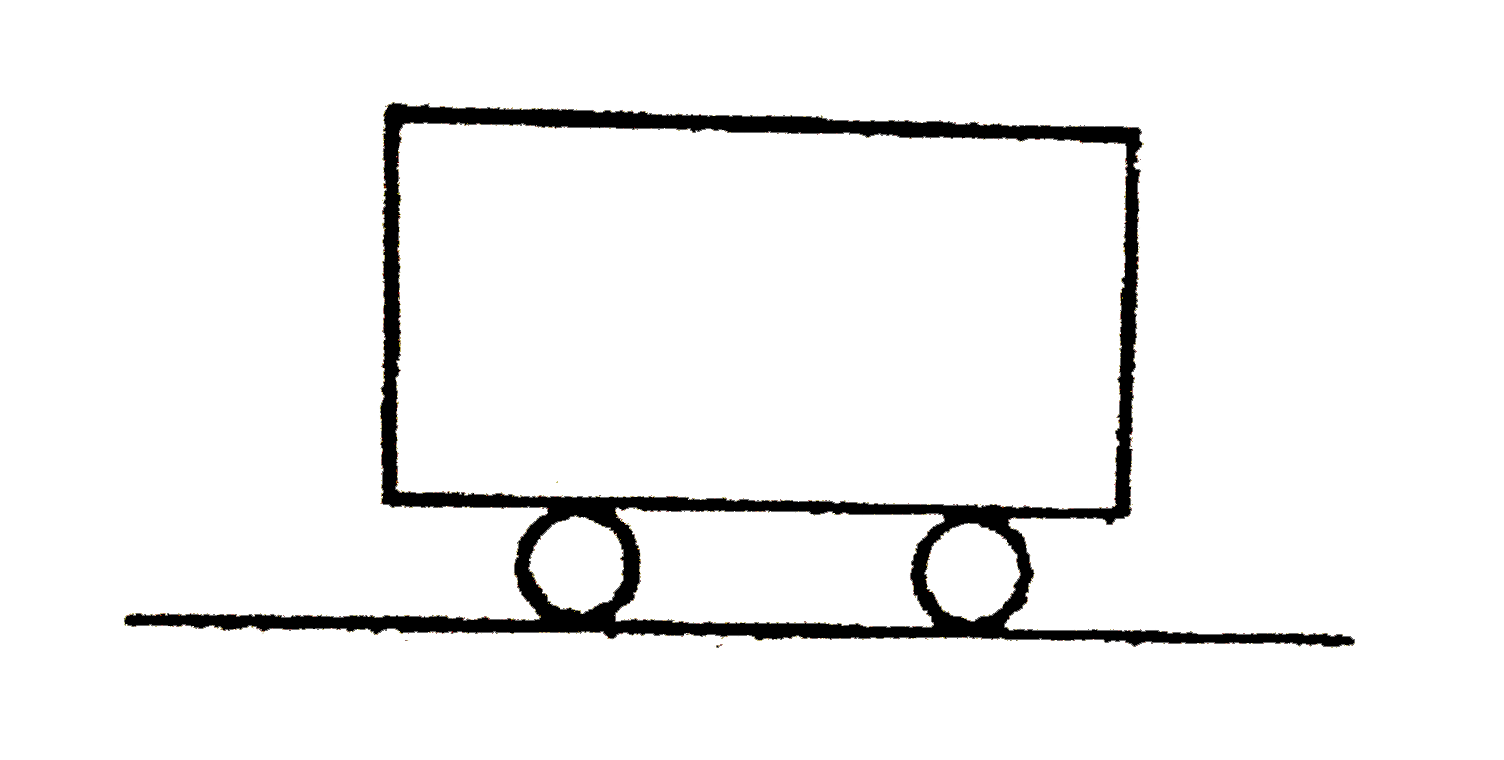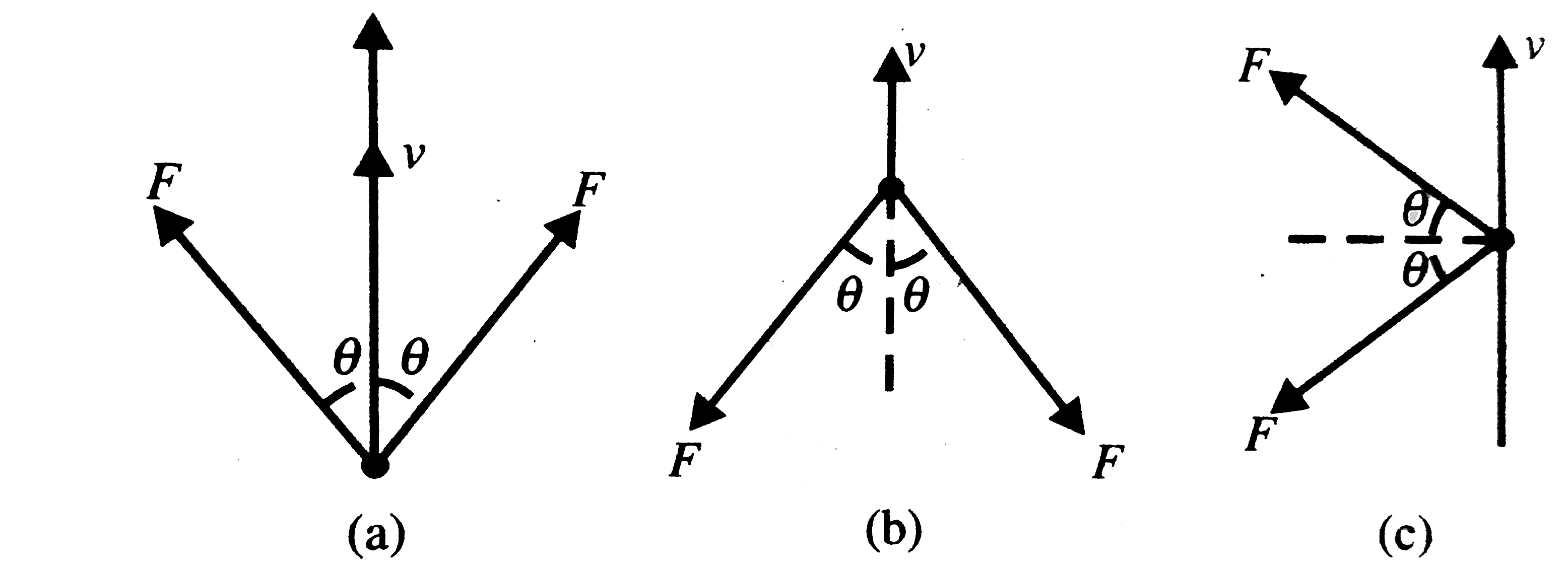Assertion:− If a particle is acted upon by an external force its momentum must change
Reason:−∣∣∣d→vdt∣∣∣ is ALWAYS equal to ddt|→v|
Here →v has its usual meaning.
If both Assertion & Reason are True & the Reason is a correct explanation of the Assertion.
If both Assertion & Reason are True but Reason is not a correct explanation of the Assertiion.
If Assertion is True but the Reason is False.
If both Assertion & Reason are False
The correct Answer is:C
To solve the problem, we need to analyze the assertion and reason provided in the question.
Step 1: Analyze the Assertion
The assertion states that if a particle is acted upon by an external force, its momentum must change. According to Newton's second law, the force acting on an object is equal to the rate of change of momentum of that object. Mathematically, this can be expressed as:
F=d→pdt
where →p is the momentum of the particle. If there is a non-zero external force acting on the particle, then the rate of change of momentum (d→pdt) will also be non-zero, indicating that the momentum of the particle must change. Therefore, the assertion is true.
Step 2: Analyze the Reason
The reason states that ∣∣∣d→vdt∣∣∣ is always equal to ddt|→v|. Here, →v represents the velocity vector of the particle.
To understand this, we need to differentiate between the magnitude of the velocity vector and the rate of change of the velocity vector. The term ∣∣∣d→vdt∣∣∣ represents the magnitude of the acceleration vector, while ddt|→v| represents the rate of change of the speed (the magnitude of the velocity).
These two quantities are not always equal because the acceleration can change the direction of the velocity without changing its magnitude (speed). For instance, in circular motion, the speed remains constant while the direction of the velocity changes. Therefore, the reason is false.
Conclusion
Based on the analysis:
- The assertion is true.
- The reason is false.
Thus, the correct answer is that the assertion is true, and the reason is false.
The assertion states that if a particle is acted upon by an external force, its momentum must change. According to Newton's second law, the force acting on an object is equal to the rate of change of momentum of that object. Mathematically, this can be expressed as:
The reason states that ∣∣∣d→vdt∣∣∣ is always equal to ddt|→v|. Here, →v represents the velocity vector of the particle.
Based on the analysis:
- The assertion is true.
- The reason is false.
Topper's Solved these Questions
- BOOK - ALLENCHAPTER - TEST PAPEREXERCISE - Exercise (Physics)330videos
TEST PAPER
- BOOK - ALLENCHAPTER - TEST PAPEREXERCISE - PHYSICS4videos
TEST PAPER
- BOOK - ALLENCHAPTER - SIMPLE HARMONIC MOTIONEXERCISE - Example1videos
SIMPLE HARMONIC MOTION
- BOOK - ALLENCHAPTER - TEST PAPER 1EXERCISE - PHYSICS11videos
TEST PAPER 1
Similar Questions
Assertion: Always ∣∣∣d→vdt∣∣∣=ddt|→v| , where →v has its usual meaning.
(Reason): Acceleration is rate of change of velocity.View SolutionA system of particles is acted upon by a constant nonzero external force. If v and a are instantaneous velocity and acceleration of the centre of mass, then it is possible that at a given instant
View SolutionA body of mass m moving with a velocity v is acted upon by a force. Write expression for change in momentum of the following case:
when v<<cView SolutionA body of mass m moving with a velocity v is acted upon by a force. Write expression for change in momentum of the following case:
when v→cView SolutionComprehension # 4
When the mass of a system is variable, a thrust force has to be applied on it in addition to all other forces acting on it. This thrust force is given by : →F=→vr(±dmdt). Here →vr is the relative velocity with which the mass dm either enters or leaves the system.

A car has total mass 50kg. Gases are ejected from its backwards with relative velocity 20m/s. The rate of ejection of gas is 2kg/s. Total mass of gas is 20kg. Coefficient of friction between the car and road is μ=0.1.
Car will start moving after time t=.........s.View SolutionAssertion When a charged particle moves perpendicular to a uniform magnetic field then its momentum remains constant.
Reason Magnetic force acts perpendicular to the velocity of the particle.View SolutionComprehension # 4
When the mass of a system is variable, a thrust force has to be applied on it in addition to all other forces acting on it. This thrust force is given by : →F=→vr(±dmdt). Here →vr is the relative velocity with which the mass dm either enters or leaves the system.

A car has total mass 50kg. Gases are ejected from its backwards with relative velocity 20m/s. The rate of ejection of gas is 2kg/s. Total mass of gas is 20kg. Coefficient of friction between the car and road is μ=0.1.
Maximum speed of car will be v=.......m/s :- (Take ln(43)=0.28 )View SolutionAssertion :− A particle has positive acceleration it means that its speed always increases.
Reason :−Acceleration is the rate of change of speed with respect to time.View SolutionA particle performs SHM along a straight line and its position is →R, acceleration is →a, velocity is →v is and force on particle is →f. Then which of the following statement are true?
(i) →v.→a is always + ve
(ii) →v.→R may be -ve
(iii) →f.→R is always -ve
(iv) →v is parallel to →f sometimesView SolutionA particle of mass m is acted on by two forces of equal magnitude F maintaining their orientation relative to the velocity v as shown in Fig. The momentum of the particle
 View Solution
View Solution
